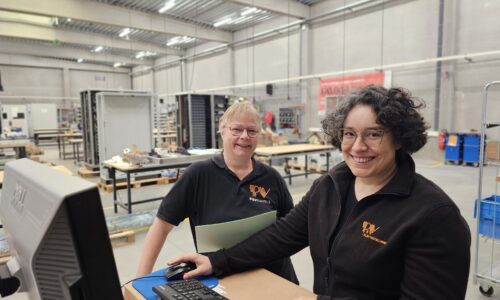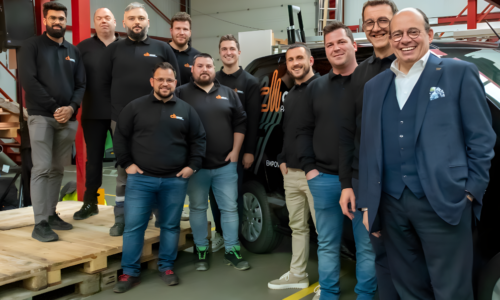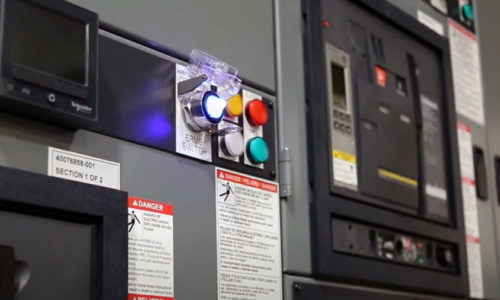Do you have a question?
If it is about control panels, we have the answer.
- Site Heusden-Zolder (HQ)
- Industrieweg 10,
B-3550 Heusden-Zolder - +32 (0)13 61 11 00
- info@pnvpanels.be
BIM for panels
One step ahead. It is our mission to always stay one step ahead when designing, building, maintaining, and upgrading your electrical control panels. In this section, we take you behind the scenes. And we will show you how we put that ambition into practice. This time: the steps moving ahead from designing in 2D to designing in 3D.
Every electrical panel starts in the EPLAN design software. Our engineers design the schematics, select and arrange the components in the cabinet, and then determine the wire paths in the panel. They work until the overall picture is right.
This design is the basis of everything that follows: from the purchase list for the materials and the automatic control of our machines, to the assembly plan for our panel builders, and the test procedures for our Quality Control Department.
35,000 items in 3D
Engineering Manager Berny Pellaers: “We mainly drew in 2D, until recently. Now we’re making the complete switch to 3D engineering. To be honest, we’re a little later than some of our competitors. Because we have been controlling our CNC machines via our own system, via 2D layout, for over a decade. And because, as the largest panel specialist in the Benelux, that step simply takes us more time. After all, 3D design implies more data. The dataset per component is rather limited on a 2D design, which means we need to update our component library in EPLAN. But because we are active in every possible sector and also offer different brands, our library is much more extensive than that of our competitors. Adding 3D data from over 35,000 items requires a lot of time.”
Engineer Willem Claessens: “Besides, right now we want to take not one, but two steps forward. A 3D design can be very basic, but to get all the possible benefits of 3D engineering, high detailing is just as important.
For us, going from 2D to 3D is more than simply entering the depth for each component.
We want to add a lot more data because rudimentary blocks don’t add anything. They don’t give us the extra insight we want.”
Extra control: no more plan B
Berny: “The more detail, the more we as designers see how the components relate to each other.
That way, we can already see on our screen whether something is feasible. And that’s precisely due to those details. Those few extra millimetres of a reinforcement profile that keep a component from fitting perfectly.
A device that protrudes a little too far so that the cabinet door cannot be closed. These are problems we’re dealing with now, so that we can always go for plan A in the workshop and don’t have to come up with a plan B on the spot. That means better turnaround times and better quality.”
William: “That’s a huge advantage for us because almost every panel we design and build is unique.
We’re much more of a prototype than a serial builder.
There are also other advantages.
Our designs will become more understandable for our customers. Even if you’re not familiar with technical drawings, you’ll immediately see what’s going on. It will also be easier for our panel builders. They immediately have a concrete view of the end result. In addition, we will be able to perform our heat calculations much more precisely. That way, that we can install the cooling precisely, right down to the millimetre.”
Automating made-to-measure wiring
Berny: “In addition to all these benefits, there’s another reason why we’re switching to 3D right now. And that’s our investment in a Komax, an automation solution for made-to-measure wiring.
This allows us to wire faster directly in the workshop and with an even lower error rate.
Komax cuts each wire to size, strips it, and labels it.
Less manual work and no more having to look at the plan every time to see where which wire needs to go.”
William: “But in order to feed the right information into that Komax wire processor, we need to know how long each wire connection is going to be.
That’s why we need those depths. And for that, in turn, it is essential to know exactly where the connections are.”
Berny: “In addition to automated made-to-measure wiring, we are also looking at the possibilities for automated copper fabrication. But then, it’s not just our item file that needs to be translated into 3D, but the system cabinets as well.”


